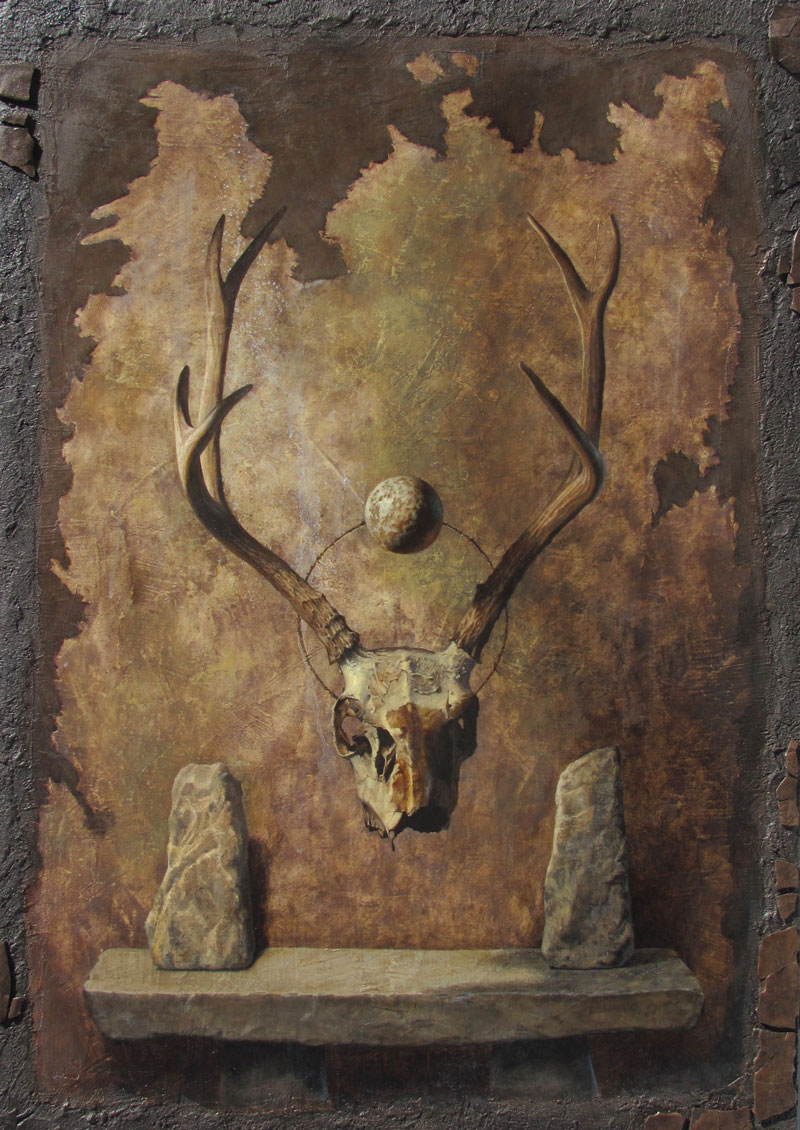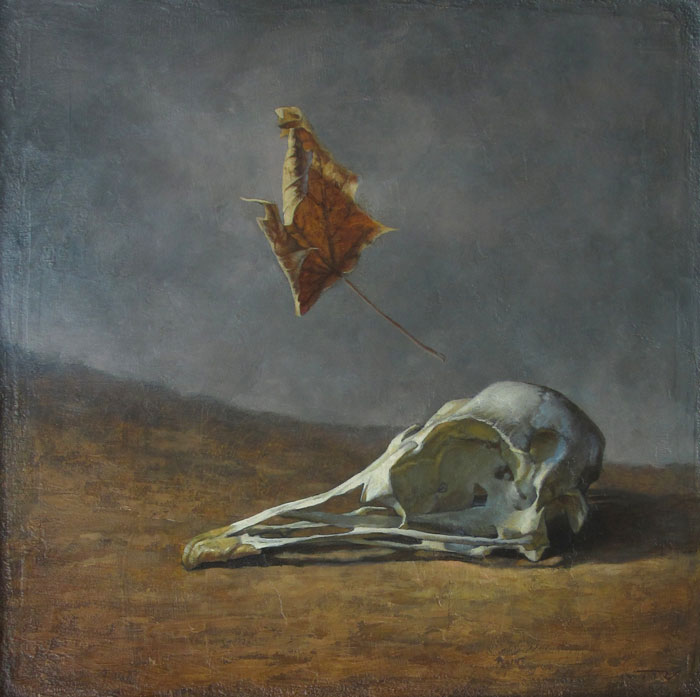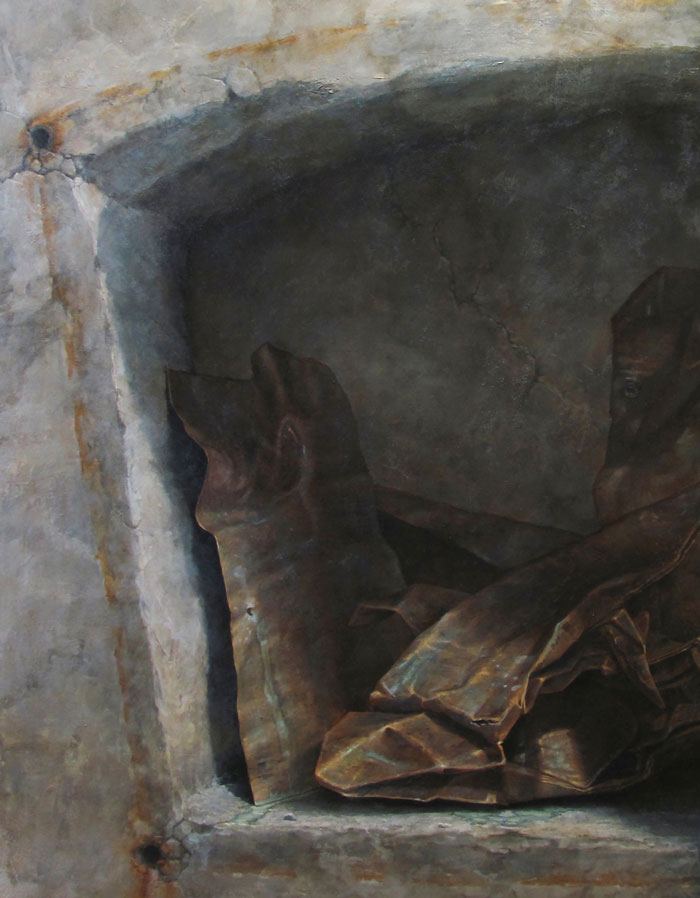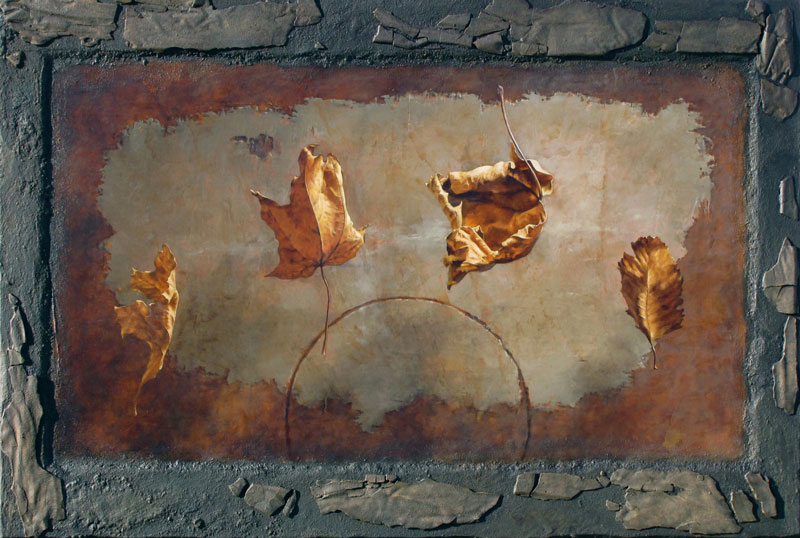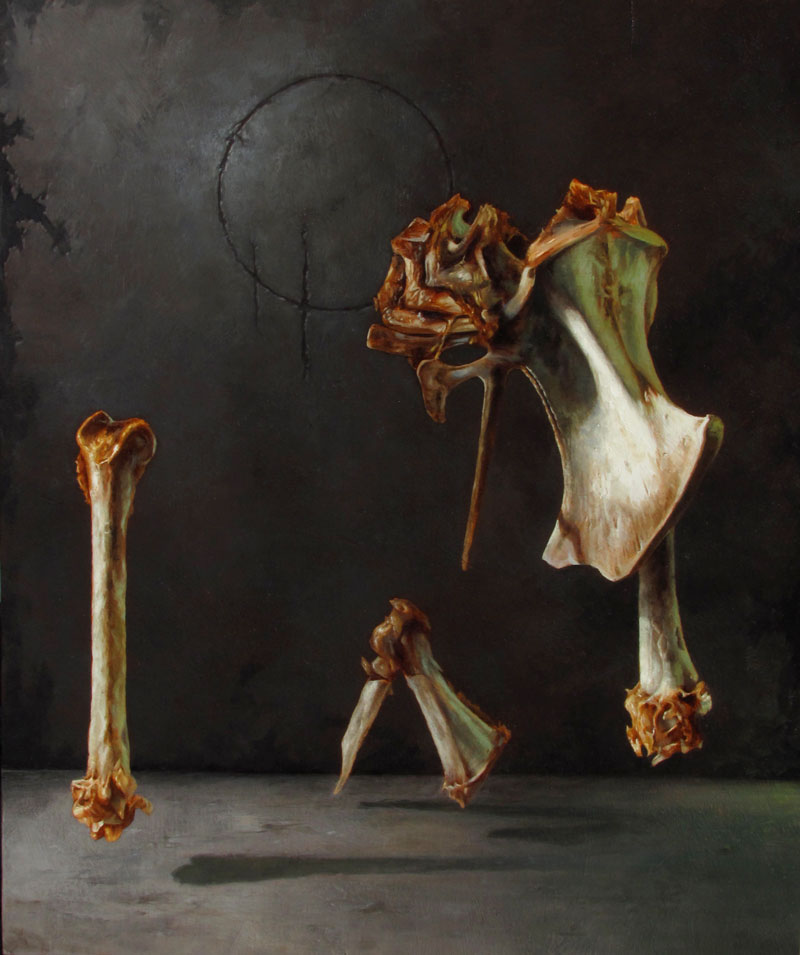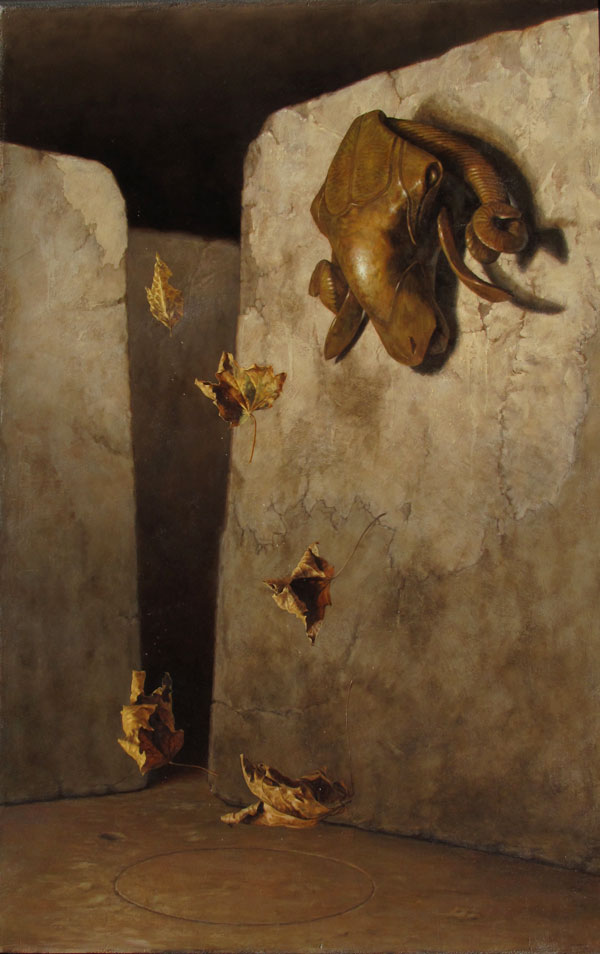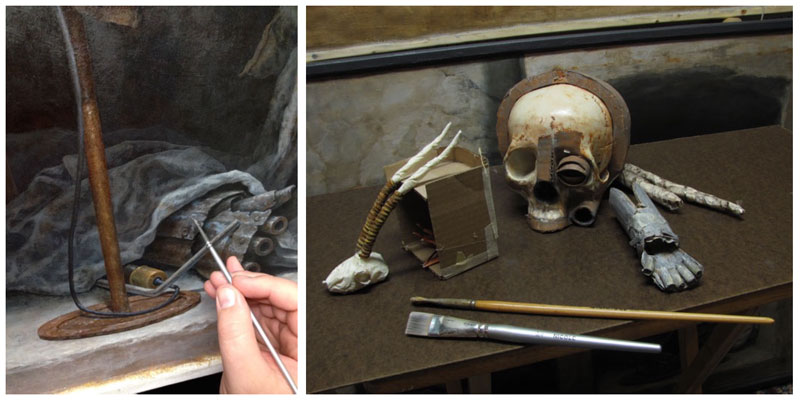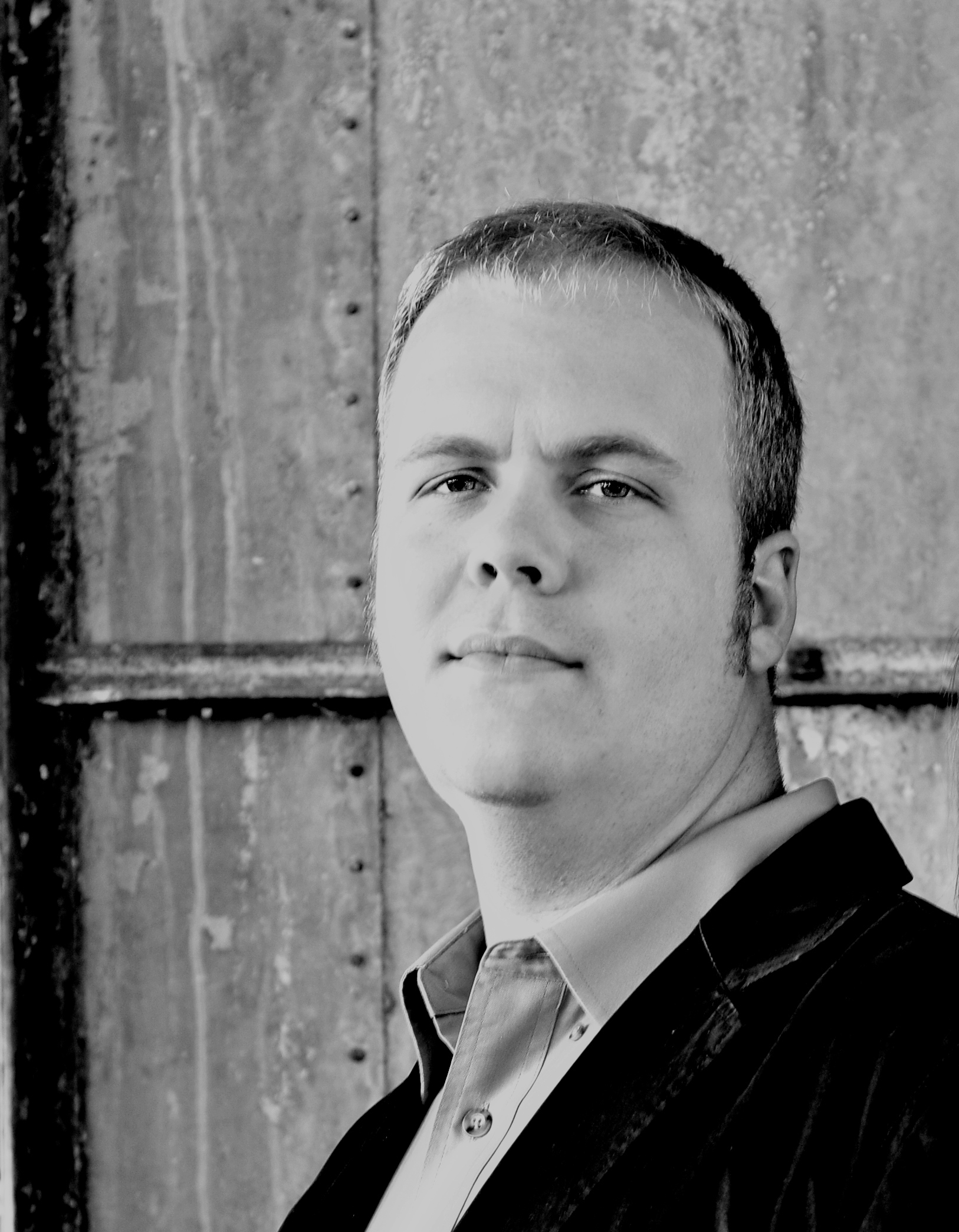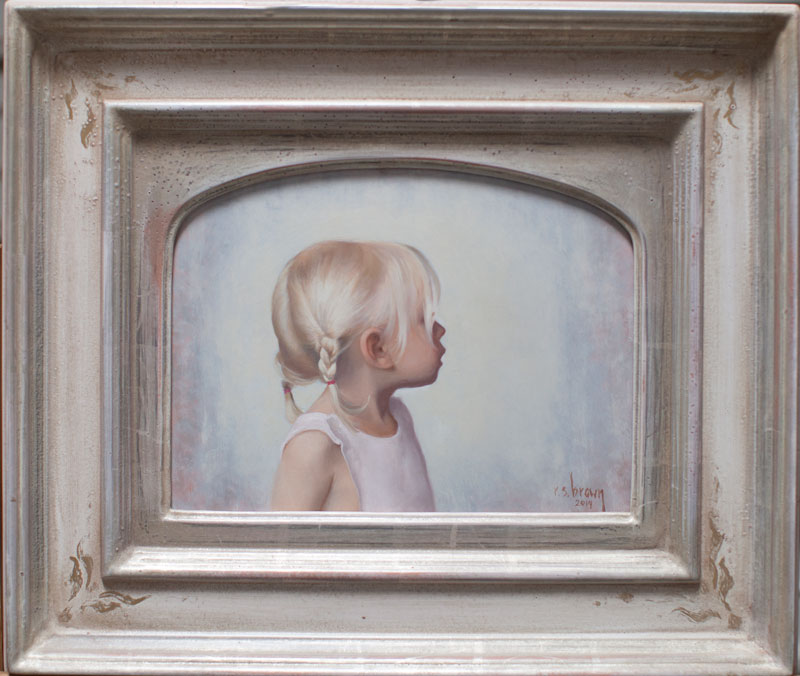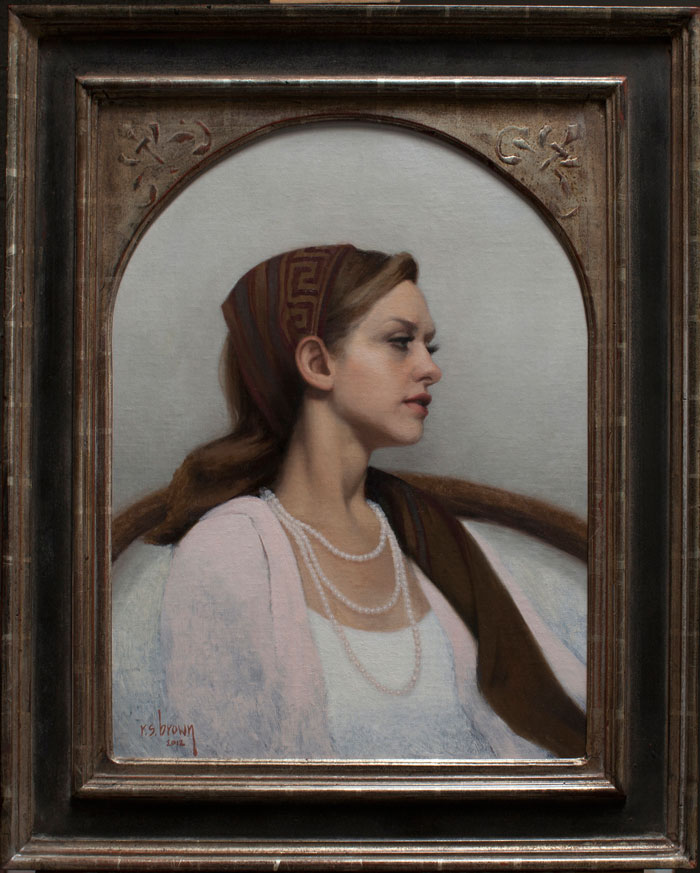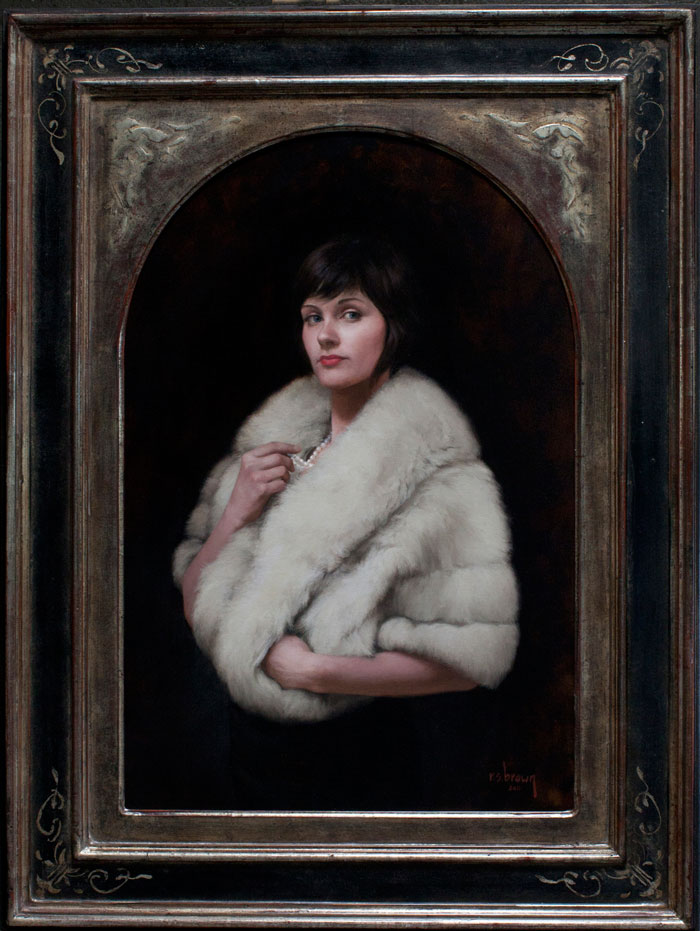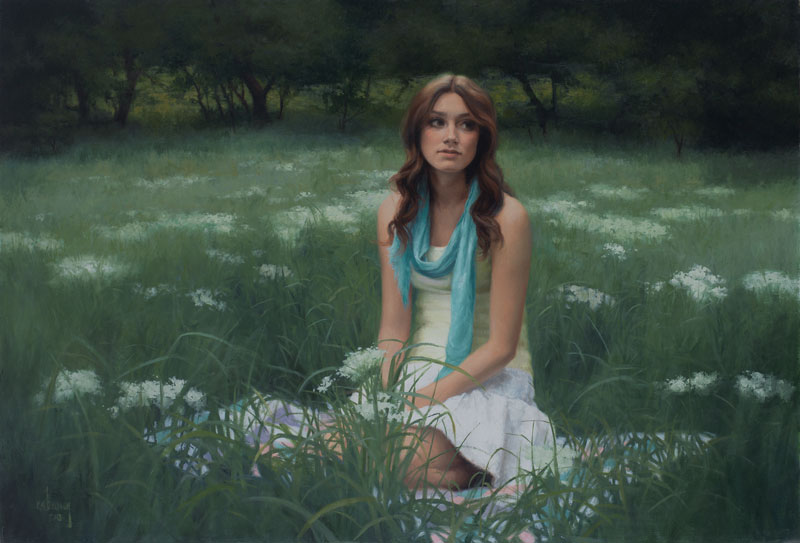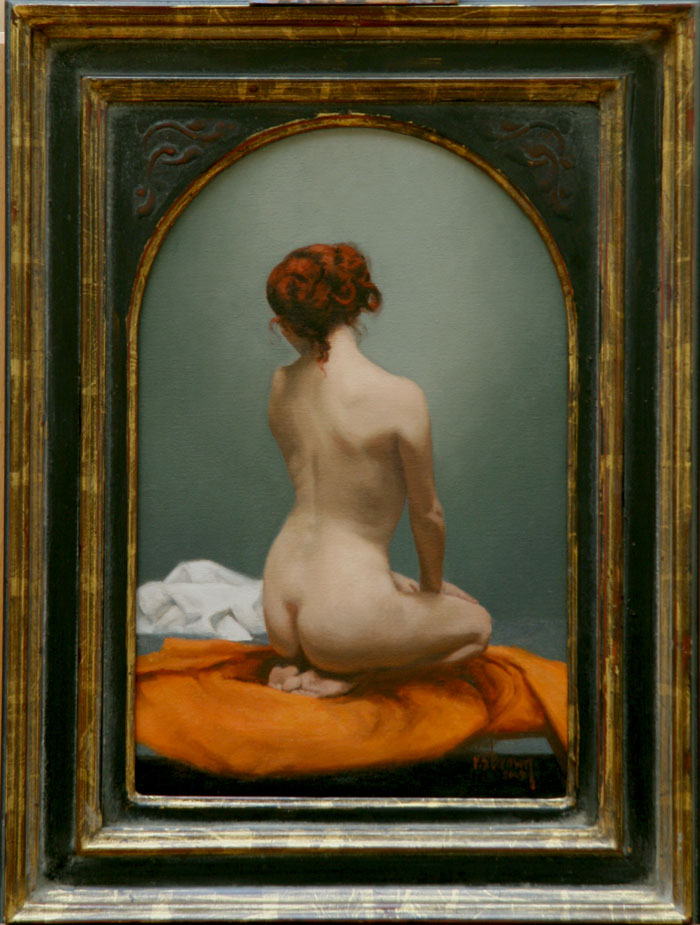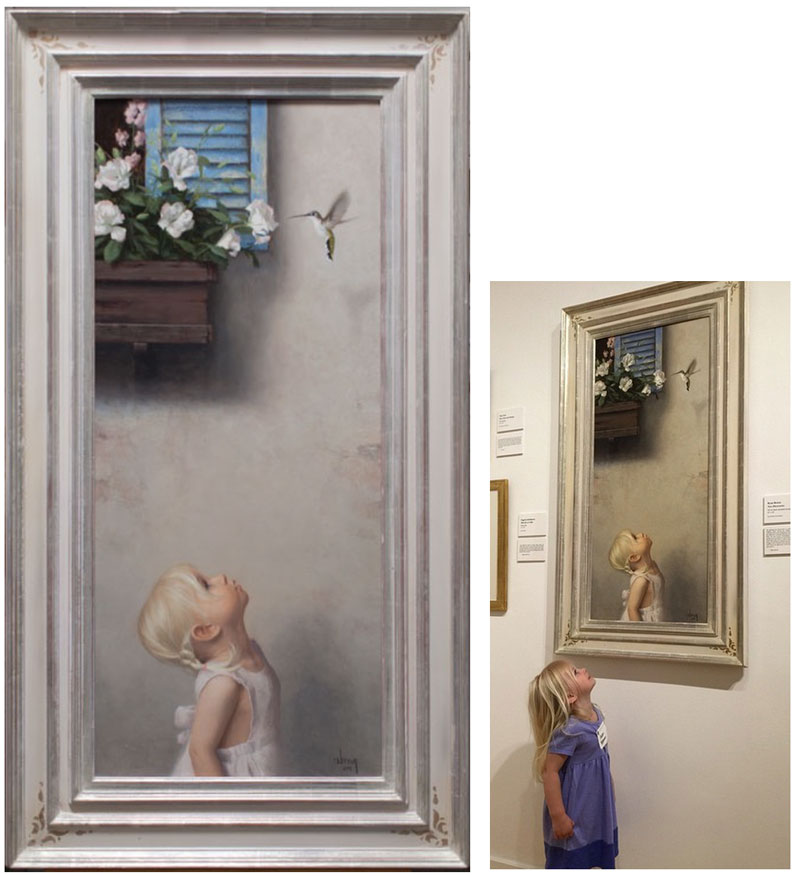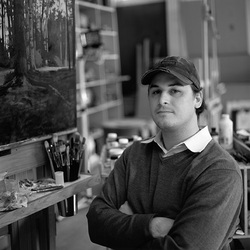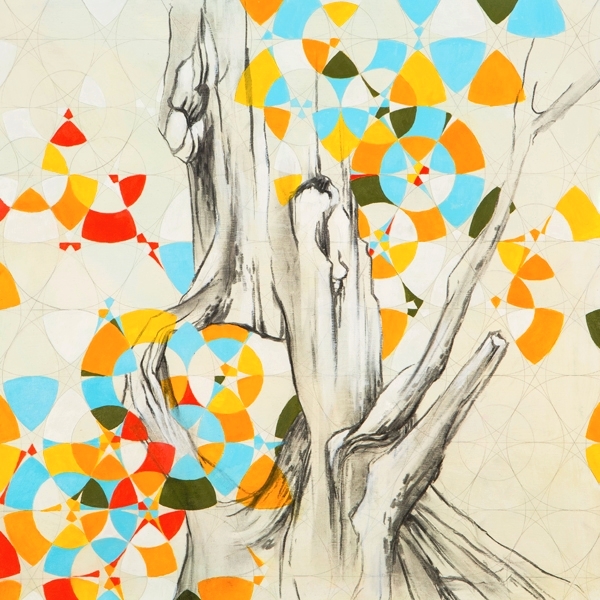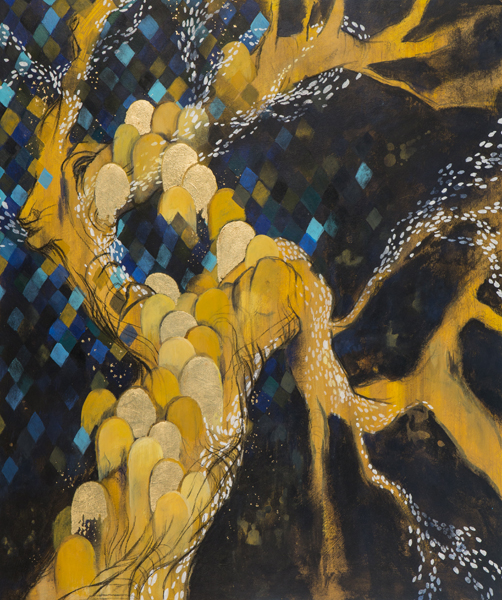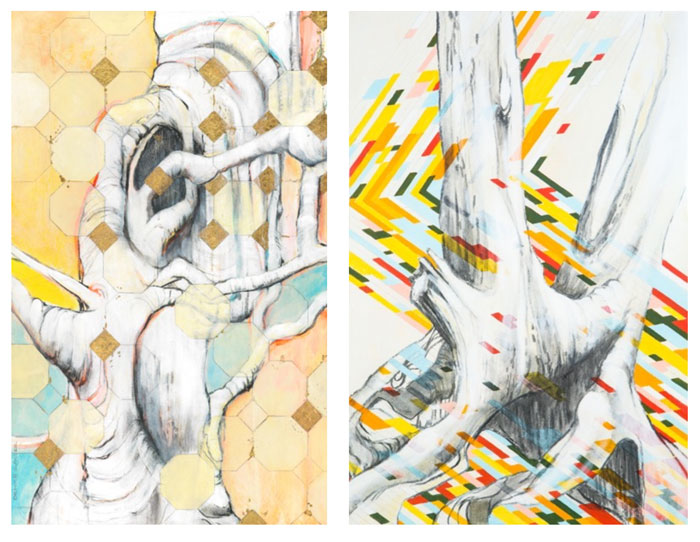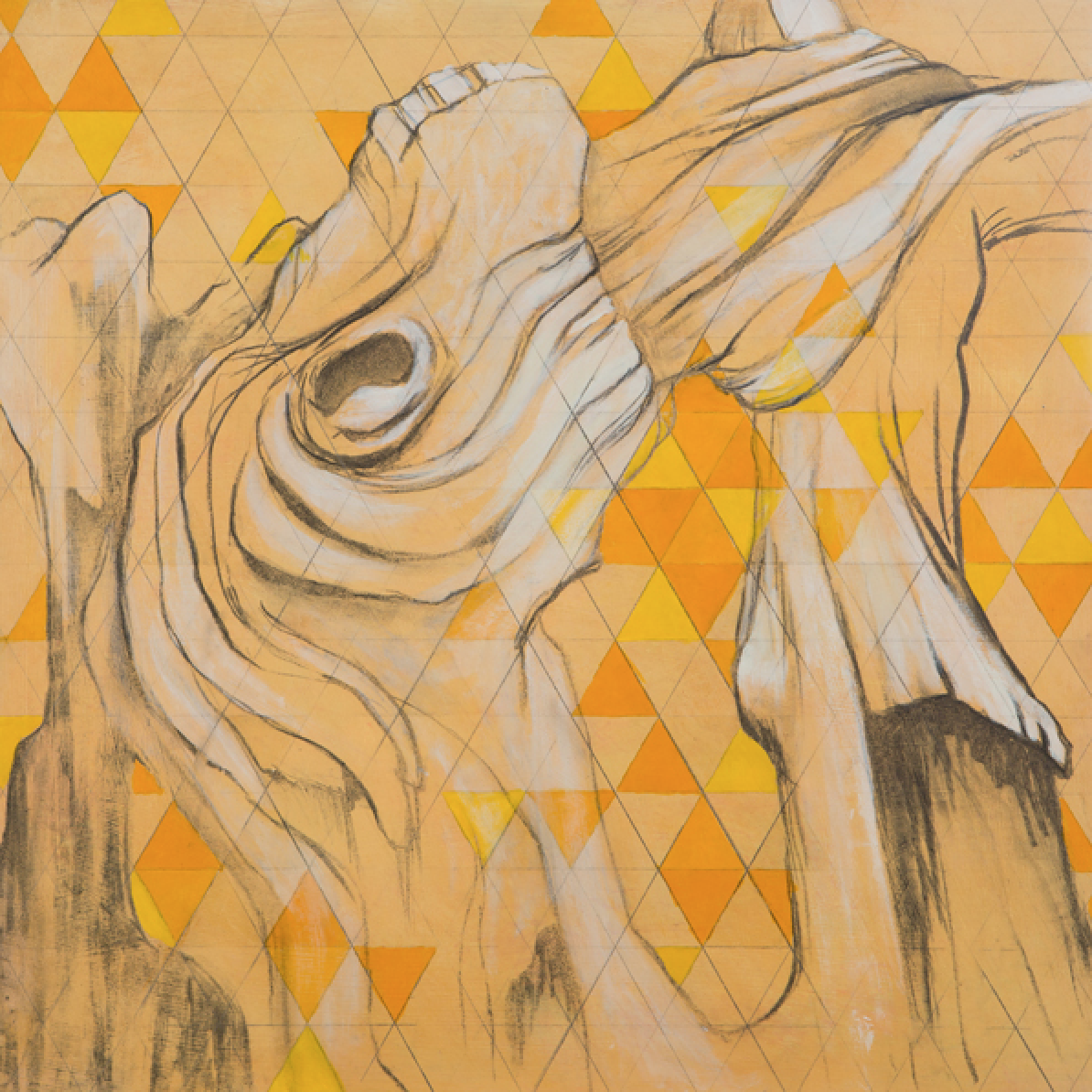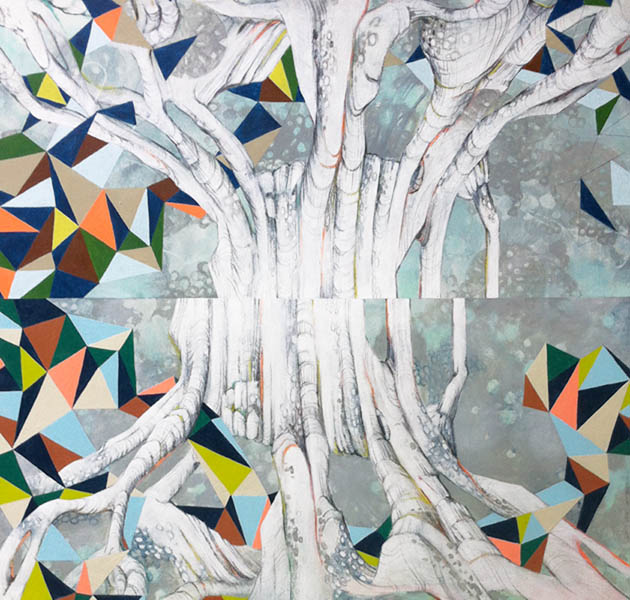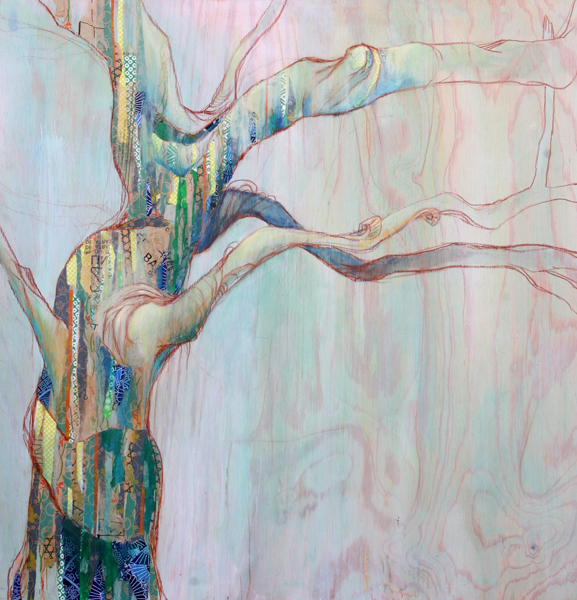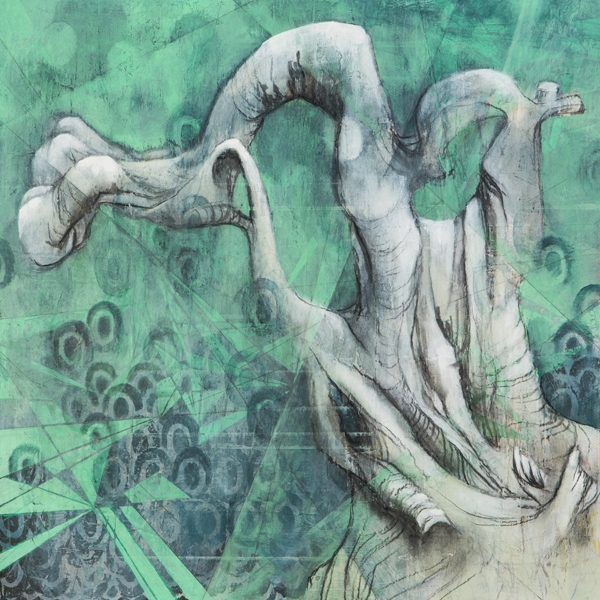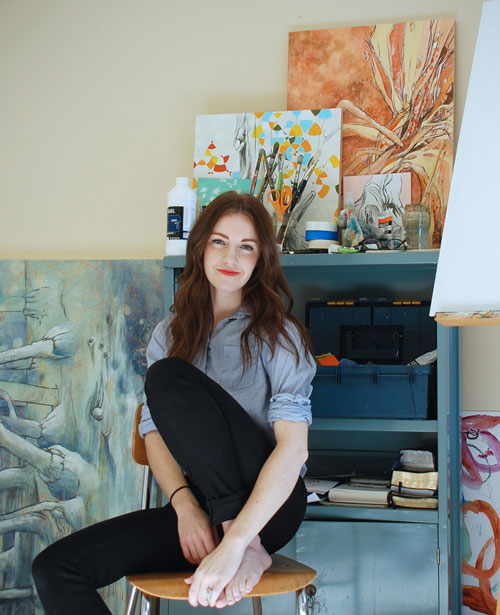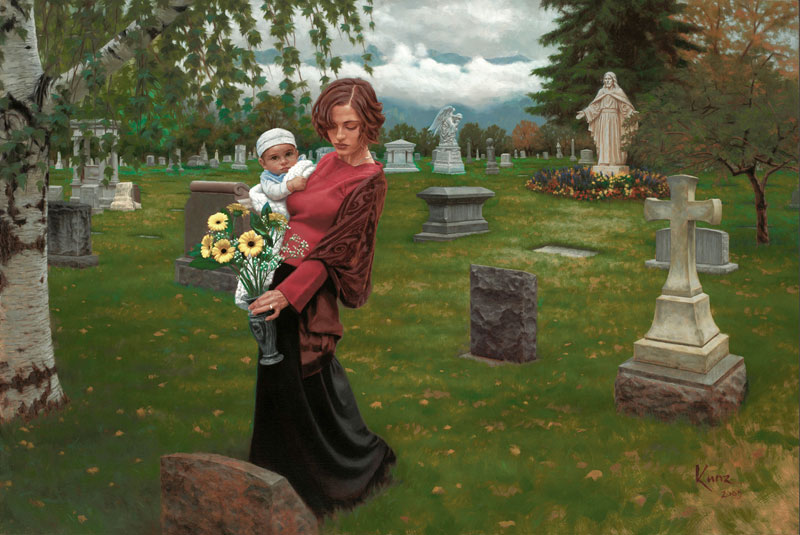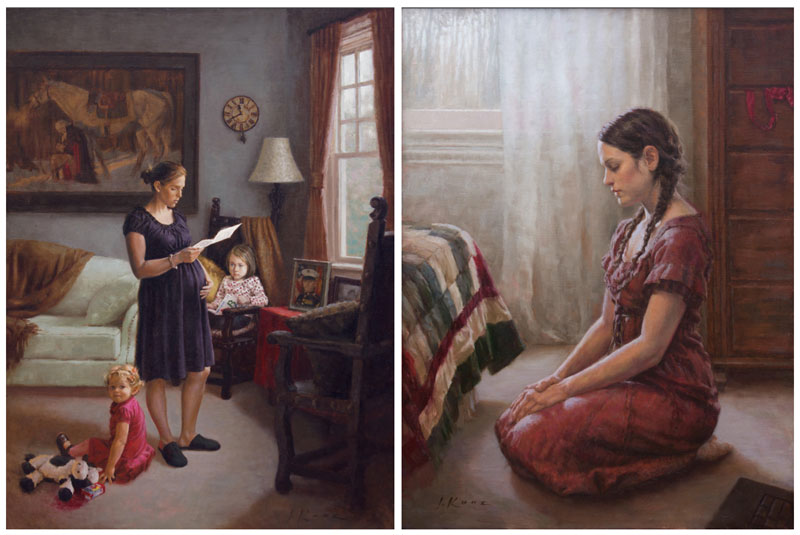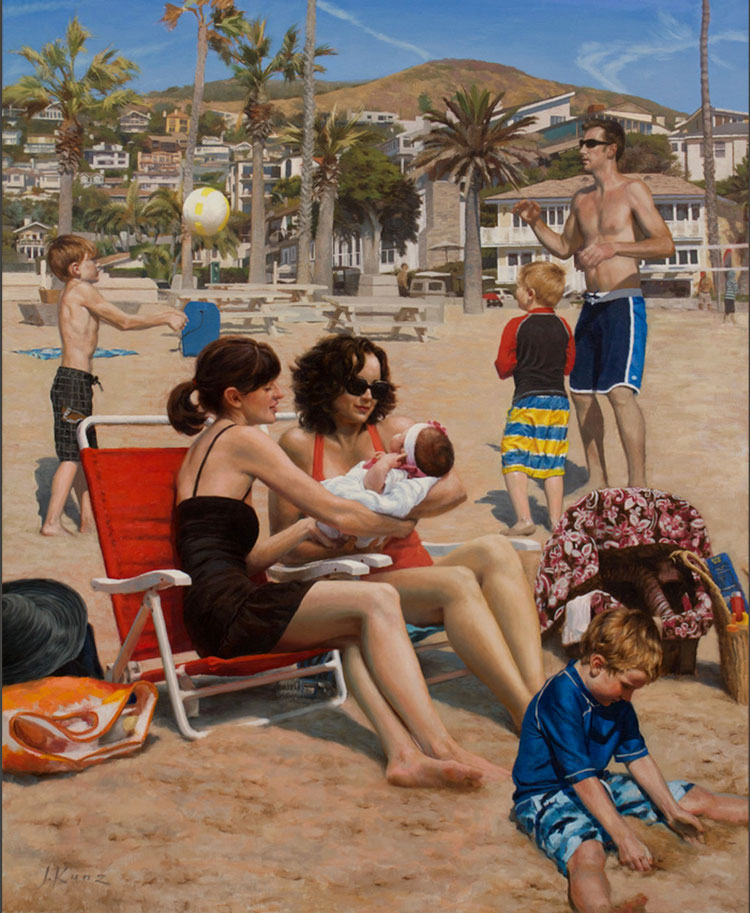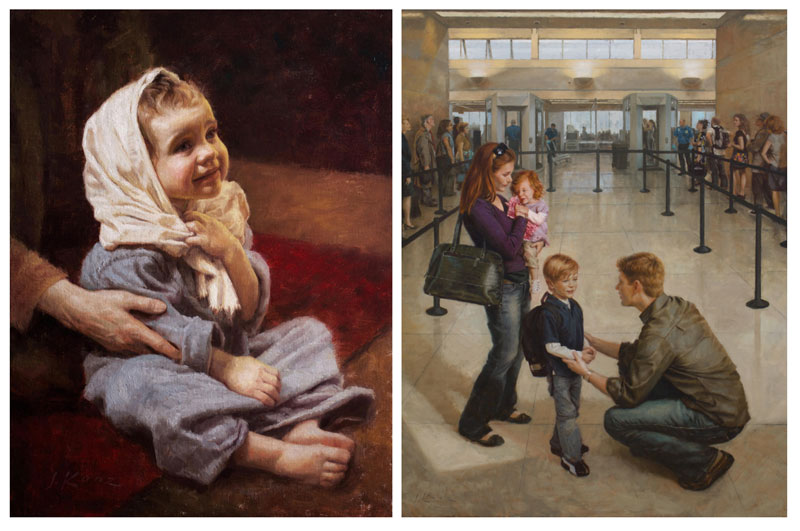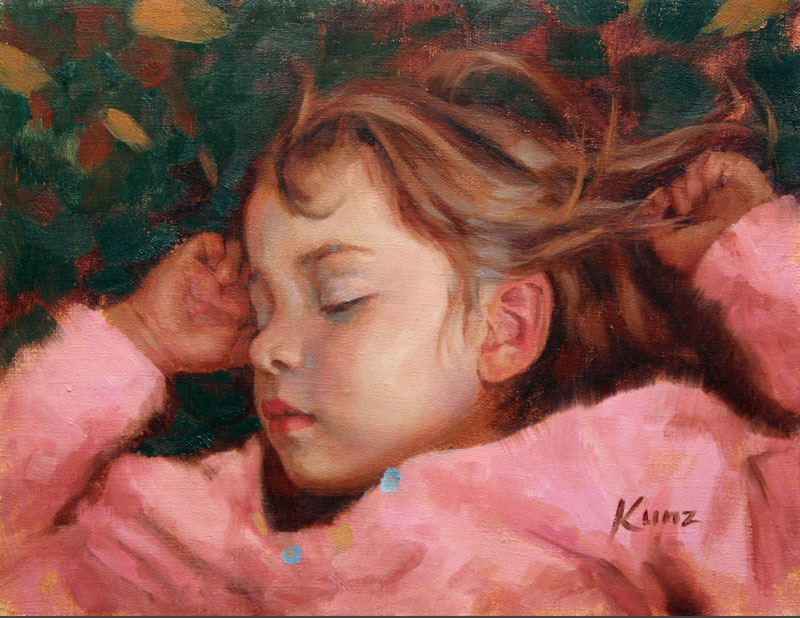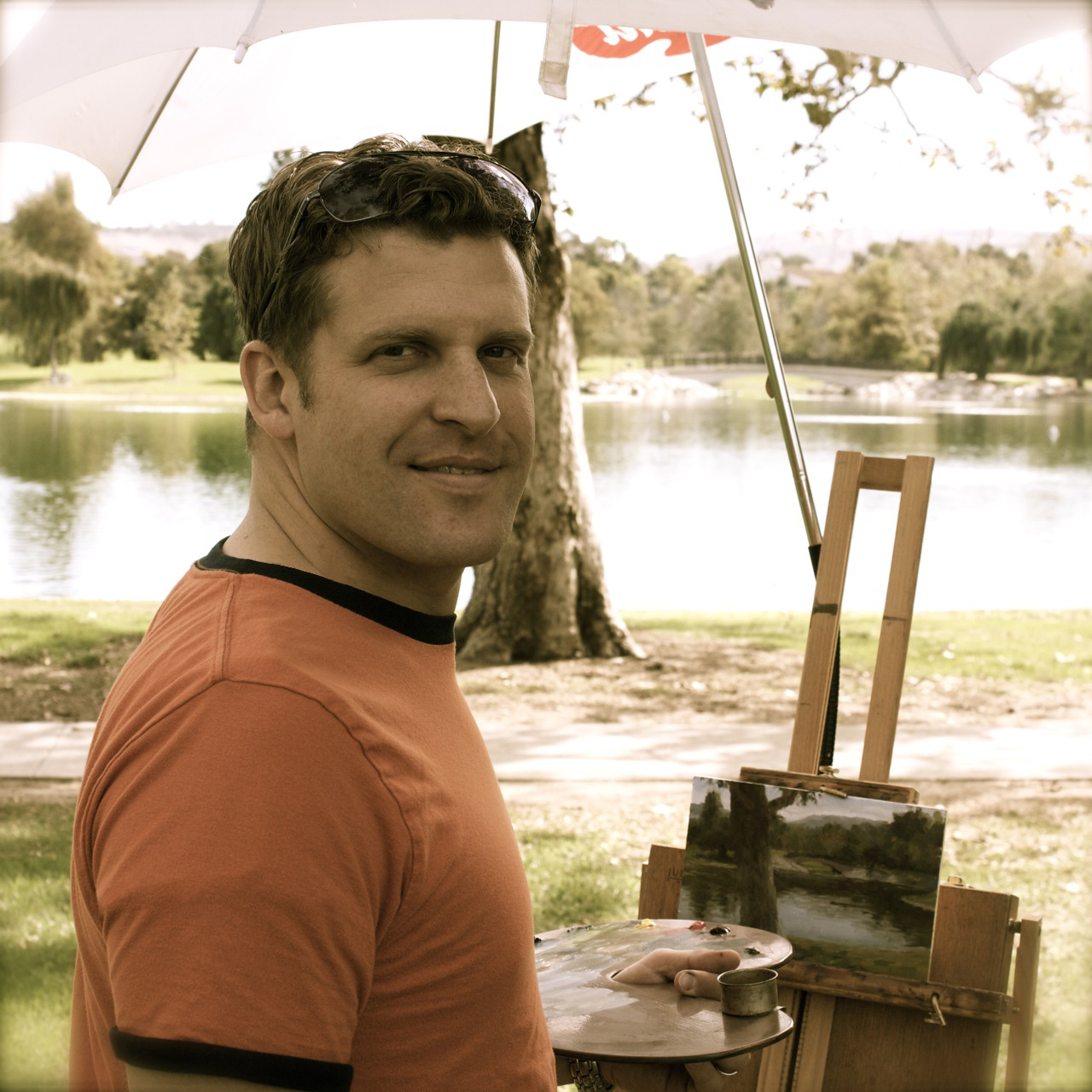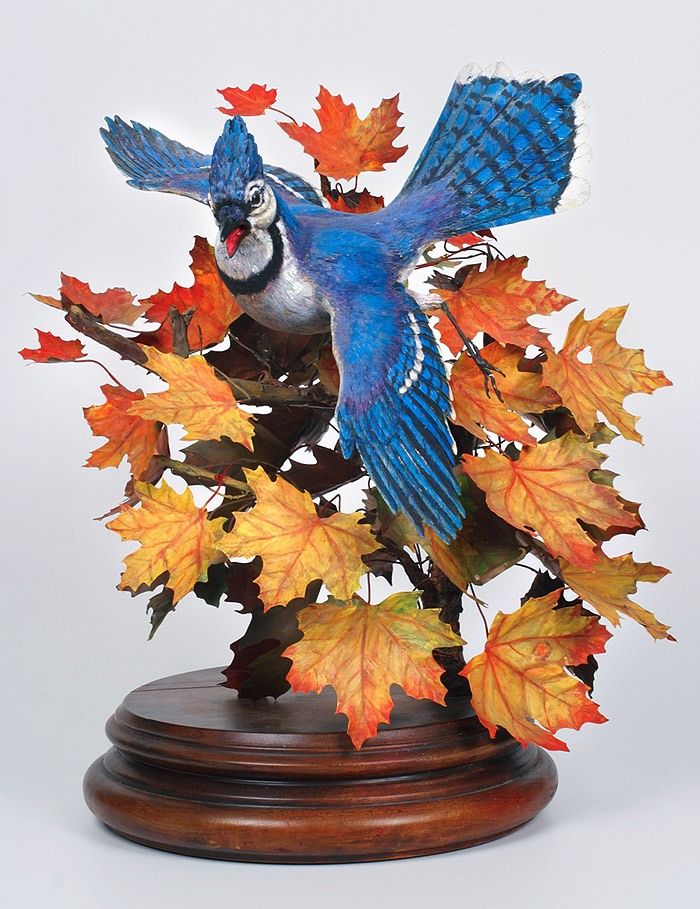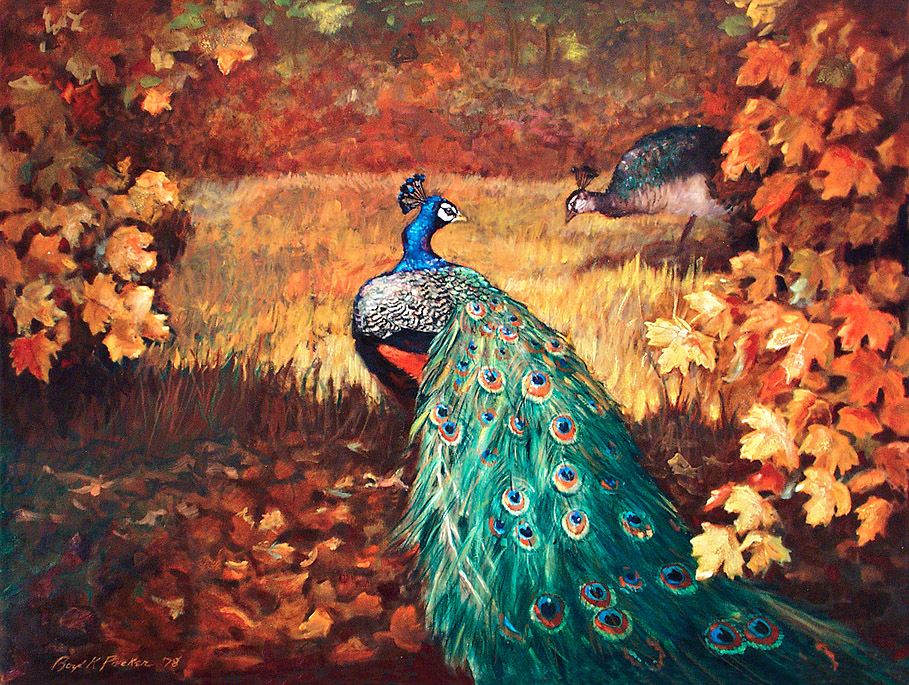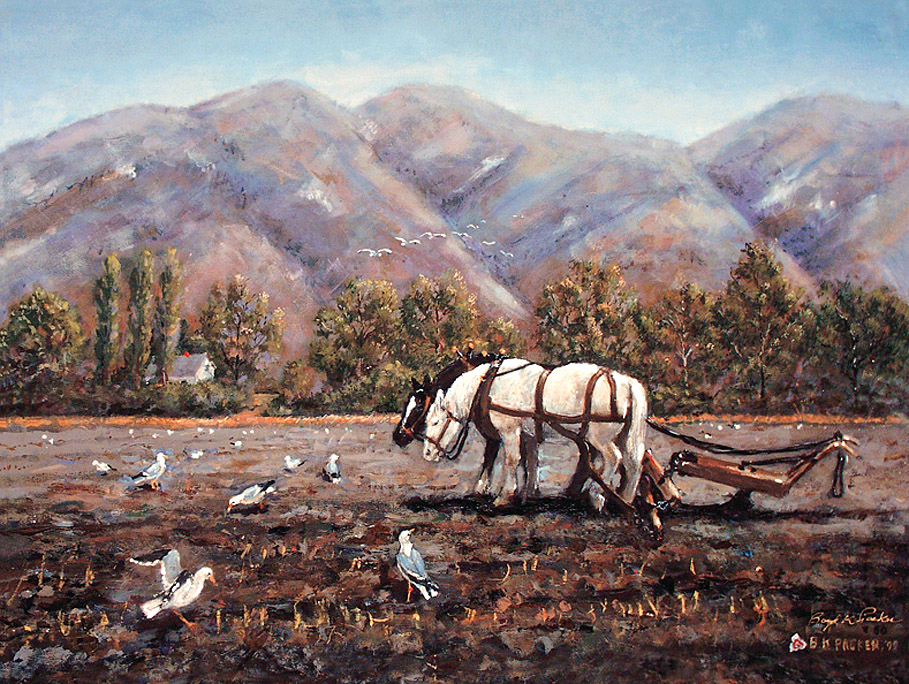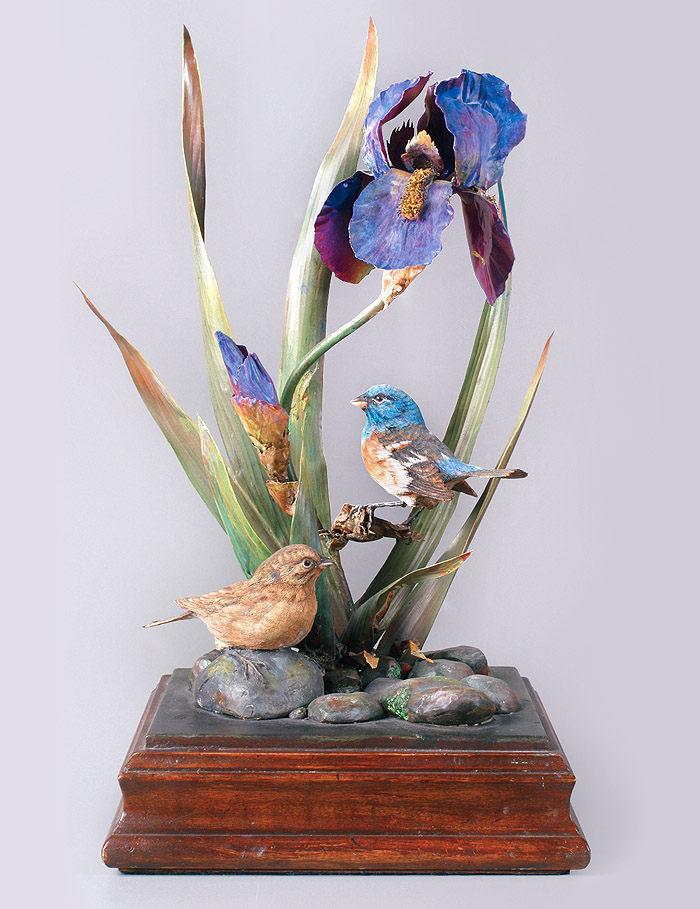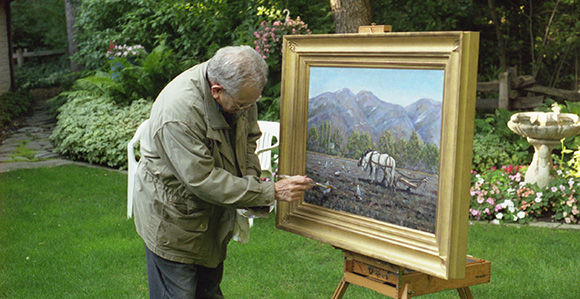Tyler Vance was working at a car battery company in his early 20’s when his wife encouraged him to return to school and he finished an MFA. He continued painting and started his teaching career as an adjunct instructor at Utah State University and then moved to his current home in Massachusetts. He teaches at various colleges and produces gallery art in his own studio. I find it remarkable that he limits his palette to six colors.
What is your work style? What is your studio like? What tools and mediums do you like to use? I’ve recently discovered the benefit of building maquettes for reference. Much of my subject matter and backdrops are difficult to find reference for, so building them myself has proven invaluable. They aren’t really sculptures in their own right – just quick models made from clay and cardboard to give me an idea of form and lighting.
My method of approaching a new painting is similar to a traditional step-by-step approach: Preliminary sketches, building maquettes, photographing, compositing and editing photos, more sketches, color studies, and a final comprehensive charcoal drawing before finally getting to the painting. It’s more time-intensive than an alla prima or plein air approach, but it yields the best results for me.
As for the actual oil painting, I exclusively paint on wood panel and use pumice grounds rather than gesso for priming. I find gesso too plasticky. After drawing in the linear composition, I paint in several layers of glazing and scumbling, going back and forth between transparent and opaque paint until I get the desired value, texture and history to the surface.
My studio is fairly straightforward. I have three main areas: painting, building, and staging. My painting area has my easels and taboret. For my main easel I constructed a simple frame with movable dowels against the wall to accommodate larger paintings. My building area has a workbench and all my tools for building supports or prepping panels. And my staging area is made up of movable shelves, multiple lights, and all of my props. This is where I set up scenes to paint from or take photographs.
You have incredible control over value in a limited palette. How did this style develop? I’ve always been first and foremost a draftsman. Painting has never come easy for me; I’ve had to work hard to find a method of painting that suits me best, and it’s still an evolving process.
I’ve used the same few colors almost exclusively now for several years: an earth tone palette consisting of yellow ochre, burnt sienna, burnt umber, raw umber, ultramarine blue, and titanium white – that’s it. I’m still exploring the range of subtle tonalities you can achieve with these colors. In this way, I don’t feel like I am actually “painting” when I work; rather it feels to me more like drawing and sculpture – building up palpable layers of texture and value.
You have said, “Bones and old things are vestiges of another life. They are not dead, but resurrected as artifacts and objects of our reverence.” Explain. There is a transformation that takes place when objects become artifacts. What once had life is now a piece of history, a relic that not only tells a story (often incomplete) about what it was, but is now a new thing with new meaning. For example, a museum takes an ancient pot used for storage and elevates it into a revered object. I try to capture that same reverence in my work, and to imply a ritualistic significance in the objects.
Bones and skulls are so prevalent in my work because they perfectly embody this idea. They are the ultimate artifacts, rife with significance and past life. They’re beautiful too; striking the right balance between organic and geometric, and they’re rich with texture. Unfortunately, both sides of the spectrum revile skulls: to the institutional artist they’re cliché; while to the general public they’re too macabre. But I can’t help myself from being drawn to them. Wherever my work takes me lately, be it a depiction of a single floating leaf or a tomb filled with mysterious artifacts, the idea of past life and new significance is the overarching theme.
